Share this Post
Featured Image: Park City South Rendering Courtesy Of Lorcan O’Herlihy Architecture [LOHA]
In 1950, Maciej Nowicki, a Polish architect and professor at NC State’s newly established School of Design, died in an airplane crash. Nowicki would never get to see the completion of J.S. Dorton Arena—the Paraboleum, as he called it—the saddle-shaped, steel and concrete, cable-supported arched building he designed that would become the culmination of his short life’s work.
Dorton Arena opened at the State Fairgrounds in 1952; considered one of the most important civic buildings in Raleigh, it’s an icon of the state’s then-emerging modernist school, the kickoff to a distinct and persisting tradition in local progressive design.
“[Dorton Arena] was admired by structural engineers and architects from all over the world,” says Raleigh-based architect and professor Frank Harmon. “Every time I drive out to Hillsborough Street and see that building rising over the hills, it gladdens my heart. I’ll never get tired of it.”
Today, that kind of heart gladdening design is visible all over Raleigh, in our parks and civic spaces, restaurants and bars, museums, hotels, performing arts centers and in many neighborhoods. But as the city grows and the need for housing, retail and office space explodes, Raleigh will continue to attract interest from developers and designers unfamiliar with the city’s culture and architectural history, or, worse, indifferent to it.
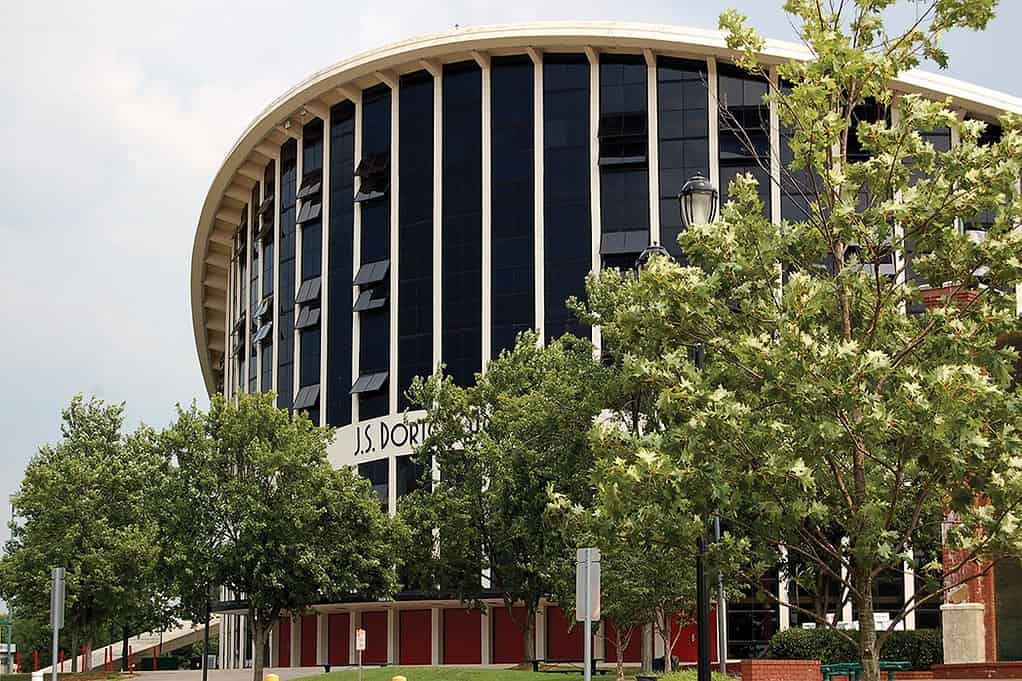
Like any small town that finds itself growing into a big city, Raleigh risks losing some of the spirit of what makes it “Raleigh.”
Will the city, and its downtown, especially, transform into a sea of parking decks and “anywhere buildings,” to borrow a term from Harmon, a modern metropolis indistinguishable from other large American cities? After all, you can’t legislate good design, as the refrain goes.
Or, will we be able to preserve and continue the tradition of what makes our city unique: the beautiful, functional spaces built on principles of sustainability, ergonomics and creating community—Raleigh’s iconic architecture? ››
The Past
By 1960, North Carolina was a hub for progressive, modern design, a cut or two below the likes of Chicago and cities in California. NC State’s design school, with curriculums in architecture and landscape design, opened in 1948 and its dean, Henry Kamphoefner, pioneered a format by which faculty members could practice design from a building on campus in conjunction with their teaching duties, giving rise to new generations of architects fluent in the principles of regional modernism.
Following a stylistic detour in the ‘70s and ‘80s, where post-modernist buildings—in the style of Raleigh’s much-maligned Archdale building on Halifax Mall—championed by Charlotte-based design firms prevailed, modernism began to see a resurgence in the 1990s.
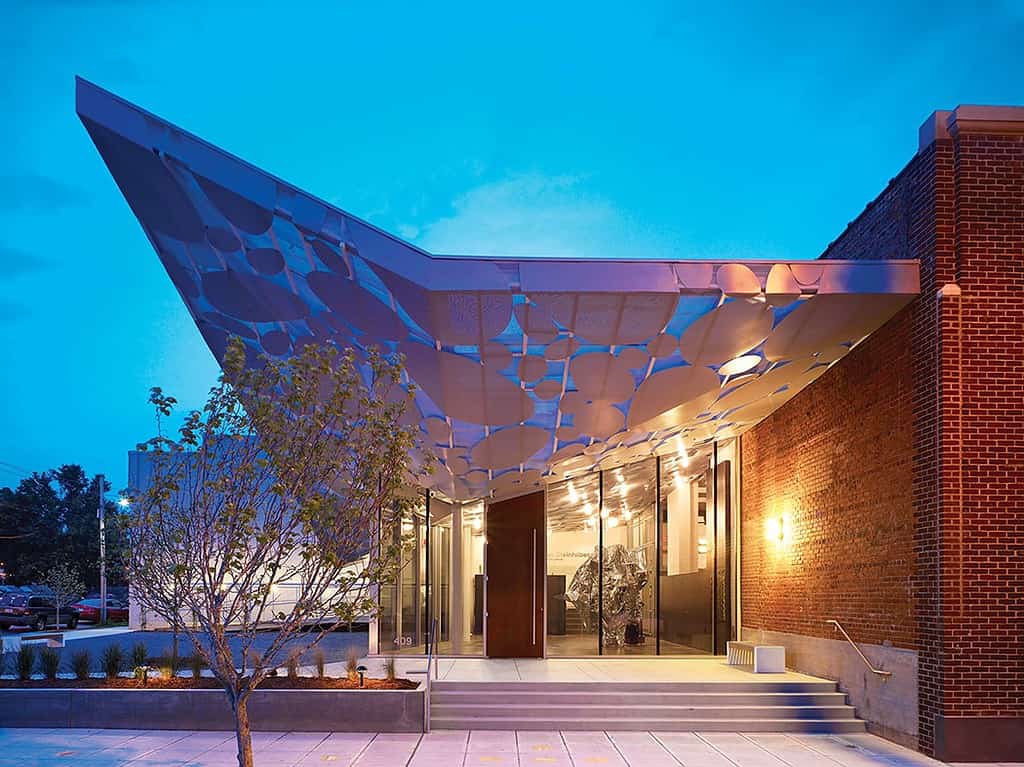
Harmon says he credits that resurgence to Harwell Hamilton Harris, a professor at the design school and Harmon’s mentor, who emphasized designing buildings in relation to their unique surroundings.
“[Harris’s] message was that every building ought to pay attention to its region, where it was, and to pay profound attention to its client and the people who use the building,” Harmon says.
It’s a message that persists today, noticeably in Raleigh’s public realm and commercial spaces as it resonates with many of the city’s locally-based designers and architects, developers and builders.
The Present
Downtown Raleigh’s turning point—when it transformed from a center for government offices, nighttime ghost town and not much else into a place that people want to “live, work and play,” day and night—is usually pinpointed as 2006, the year Fayetteville Street reopened to traffic. This was also the year that the circa-1977 Civic Center—generally agreed to be another of the city’s great modern eyesores—was demolished, opening up an unimpeded view of Fayetteville Street from the Capital Building to Memorial Auditorium.
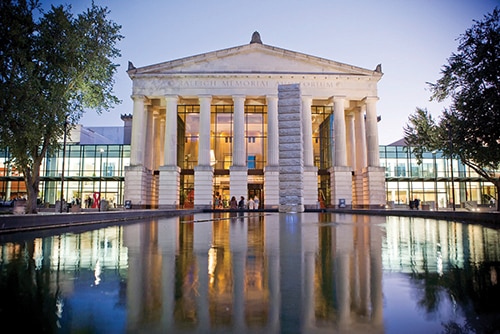
But in some ways, the revitalization had already begun with the (now-acquired) Raleigh design firm Pearce, Brinkley, Cease + Lee’s renovation of Memorial Auditorium and the facility’s expansion to include Meymandi Concert Hall, A.J. Fletcher Opera Theater, Kennedy Theater and Lichtin Plaza.
“These are the places that entice people,” says David Hill, an architect, professor and the head of NC State’s School of Architecture in the College of Design. “These are the places people go, and remember, because of the architecture and sound and the sights. In some ways, the cultural venues led the way.”
Another pioneer in revitalizing downtown Raleigh was the architect Steve Schuster, who founded his firm, Clearscapes, in 1981 as a collaboration with the artist Thomas Sayre. Clearscapes’ philosophy was grounded in the idea that architecture should be more than just buildings, that it should inspire its users in how they respond to their physical environment and that buildings and spaces should introduce some of the joys and thoughtfulness of art.
Schuster famously moved downtown and started renovating old buildings there long before its revitalization was on anyone else’s radar in any meaningful way. As a result, Clearscapes has shaped downtown’s streetscapes, districts and public spaces more than any other design firm in recent memory.
“Now, you go downtown and you can’t go several blocks without engaging with one of [Clearscapes’] buildings,” says Hill. “They’re incredibly important. It’s remarkable what [Schuster] was able to do, what Clearscapes was able to do, with the historic fabric of Raleigh.”
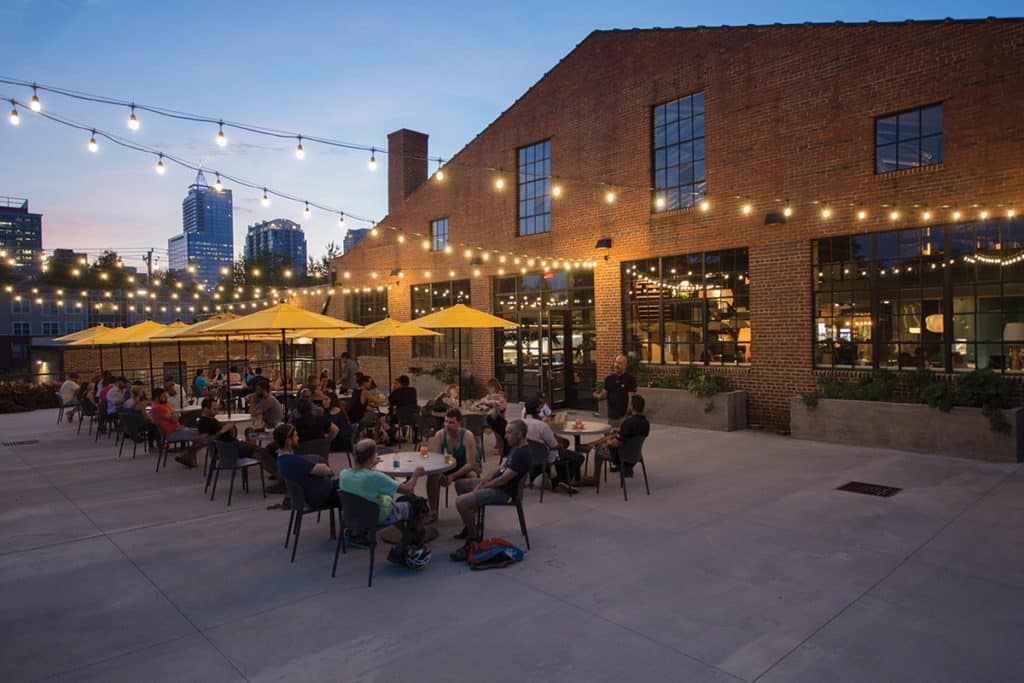
Schuster passed away last year but, downtown, his legacy is indeed felt everywhere. From Marbles Kids Museum to the Convention Center, Union Station to the Contemporary Art Museum, Transfer Company to Chavis Park, where renovations are currently underway, Schuster’s vision, and Clearscapes’ commitment to the community, are palpable.
Part of what makes Schuster’s projects so successful, his contemporaries say, was his focus on engaging the communities he was designing for, through public meetings, workshops and presentations before ever floating an architectural design solution.
“Steve’s joke when he was working on the Convention Center used to be that he lost count after 100 meetings,” says Fred Belledin, a principal at Clearscapes who worked closely with Schuster. “And after 100 meetings, the result was, the community wanted ‘an iconic building that blended into the context.’ But there’s actually sound logic behind both aspects of that statement.”
“It’s why we don’t have an iconic style,” adds Mon Peng Yueh, another principal at Clearscapes. “Because each project is very specific to the place and the client and the people in the community.”
But if Clearscapes projects don’t have an iconic style, they—and some of the best public and civic spaces in Raleigh—do share the principles that Harwell Hamilton Harris espoused about buildings paying attention to their surroundings and to the people who will use them.
Raleigh’s museums, especially, use space and speak to the client adeptly. Consider the new West Building at the NC Museum of Art, its sprawling art park and a surface parking lot that’s easy to navigate without detracting from the beauty of the surroundings. CAM, too, is visually compelling—as a modern art museum should be—but also engaging on the street level with its outdoor plaza. And few places in the city are as much fun for children to visit as Marbles Kids Museum, a playful building with its marble panel facade, active courtyard and engagement with neighboring spaces, including Moore Square.
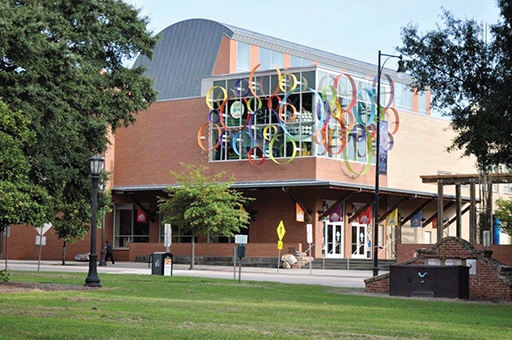
There’s also a strong reference between architecture and placemaking in Raleigh and its burgeoning food scene, underscoring the importance of the role of eating and drinking in creating and activating community spaces. Local developers, such as Transfer Co. Food Hall’s Jason Queen and Trophy’s David Meeker, understand this relationship and they’ve combined design and dining effectively, fostering communities and creating memorable experiences for the people who use their spaces.
It’s not a coincidence that some of Harmon’s former students, now principals at the Raleigh Architecture Company (who designed Trophy Maywood, State of Beer and Standard Foods, among others) and at in situ studio (who designed Bida Manda, Jubala, Gallo Pelon and more), are the creatives behind some of Raleigh’s most celebrated foodie spaces.
“Transfer Company didn’t start out with the intention of being a food hall,” says Clearscapes’ Belledin. “It started with the intention of creating community and place and figuring out the right way to achieve that. You see this a lot in the food scene here. Van [Nolintha] does an amazing job of bringing his story and making it the heart of his spaces. Cheetie [Kumar] does an amazing job, Oscar [Diaz], too, from Jose and Sons. These folks bring incredible personal stories and truly try to embrace and understand what it means to be part of Raleigh.”
The Future
But what does it mean to truly be part of Raleigh, or what will it mean?
With the city’s unprecedented growth will come opportunities—to create a world-class, next-to-downtown park (Dix) or two (Chavis)—but with that growth will come even more challenges, such as how to address affordable housing and how to build a city that puts people first rather than cars. We’ll have more tall buildings, no doubt, but how tall, and how engaging? And how can we ensure we’re developing the city equitably and sustainably?
“We are very much a single family residence kind of city, and now we’re starting to see multi-family housing,” says NC State’s Hill. “With the good comes the not so good and some of the design schemes we are seeing are run of the mill. You can see the same five story wood-framed condo building in Raleigh that you might see in Kansas City or Dallas or Charlotte.”
Ditto the tall buildings.
“We’re seeing a lot of podium construction, [several] stories of parking deck where the building doesn’t start until somewhere way up high,” says Brandy Thompson, a principal at Clearscapes and member of the city’s Appearance Commission which reviews design proposals for new buildings.
“So much is driven by parking and many of the last projects we’ve seen [proposed] all have parking podiums right on the street face,” Thompson continues. “Even on Fayetteville Street, the most precious street in the city. At the end of the day, that will significantly negatively impact [Raleigh’s character].”
But local firms are already working on creative approaches to multi-family housing, such as The Ware townhomes next to Transfer Co. on Chavis Way and new The Fairweather condos on S. West Street, from Clearscapes and Raleigh Architecture Co. respectively.
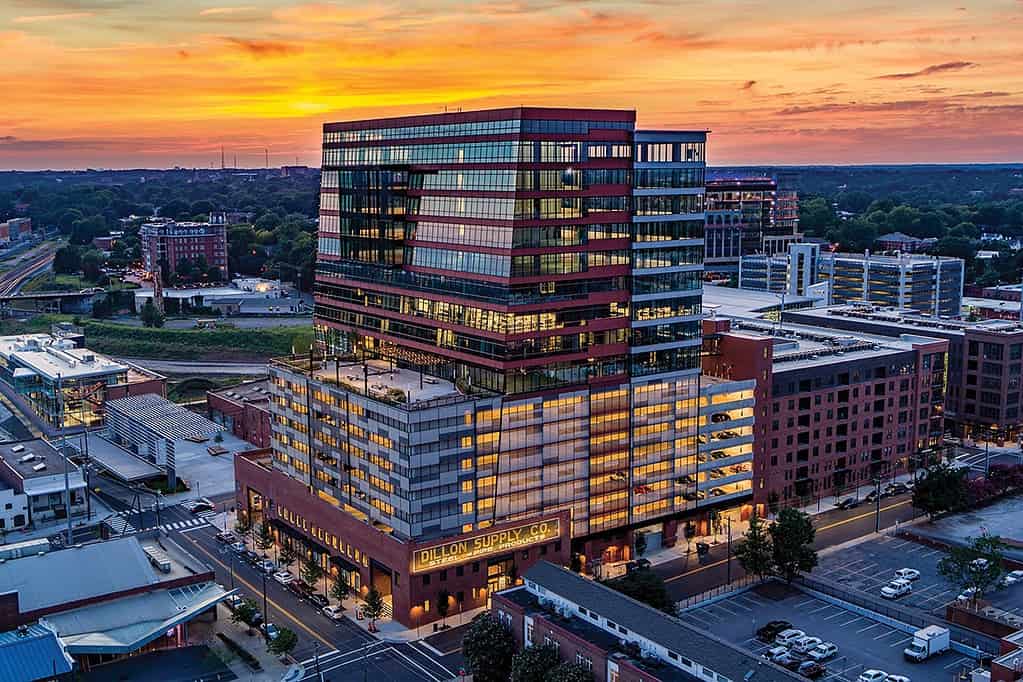
“You can build density and maintain a certain scale that is sensitive to context and surroundings,” says Hill.
Thompson says there are some tower projects in the pipeline that she’s excited about, including the new Raleigh Union Station bus depot and mixed use tower, known as RUS Bus.
“The whole composition of uses of that building was put together for a team that would use the lowest parking requirement,” Thompson explains. “[The client] didn’t want a giant parking podium.”
Other developments, including the Raleigh Iron Works project, a partnership between Raleigh’s Grubb Ventures and international design firm Jamestown, have local design advocates intrigued, as does Park City South (featured on this month’s cover), a high density, mixed use development planned for South Saunders Street along the southern corridor into downtown. The developer, Merge Capital, is local but Los Angeles-based Lorcan O’Herlihy Architects (LOHA) is designing the project; LOHA has won numerous design awards recently, including No. 1 design firm in the country on Architect Magazine’s list of the nation’s top 50 firms in 2018.
Park City South will be especially important to Raleigh due to its proximity to Dix Park. The multi-tower project will connect to the park via the greenway, says Merge Capital’s Corey Mason, and will serve “as a connector of the east and west sides of the city, which have traditionally been very divided.”
As for Dix Park itself, Raleigh’s next frontier, design experts say the developments surrounding it, as well as its connectivity and accessibility, will be what make or break it, as important to the the park’s success as anything located inside it. It can’t be like Umstead Park, for instance, where users largely have to drive to reach.
“Some of the thoughts about connecting [Dix Park] to downtown across Western Boulevard, some of the developments around the edges, that’s what’s really going to activate the park,” says Philip Szostak, the architect who designed Durham’s DPAC. “This is Raleigh’s Central Park, what people will talk about when they talk about Raleigh. No one drives to Central Park, they just happen to be there, at the museums, the offices, all the things around it.”
Which brings us to the final piece of the puzzle determining what Raleigh’s architecture will look like in the decades to come: its transit system. “We gave away our city 100 years ago when we made it a mostly motorized city,” says Harmon. But now, we have an opportunity to take it back.
As Wake County’s transit plan (which, currently, foremost consists of Bus Rapid Transit) is implemented, huge amounts of development will occur around each transit stop; the city, effectively, is staking its future development on those locations and how they connect all over the city and the region.
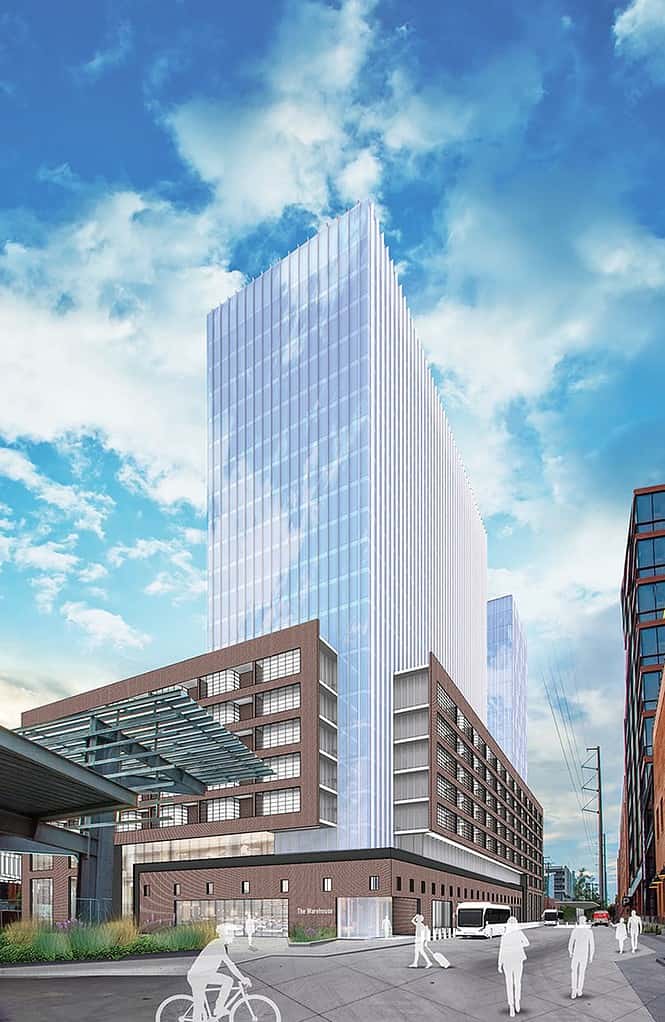
So how can we ensure that the development around transit, that will serve, potentially, thousands of the city’s future residents and visitors, is comprised of functional, sustainable, equitable design?
“Our market has to demand it,” says Clearscape’s Belledin. “Raleigh is so small and the demand is so high that if you put up space, it will get leased or sold. Until our market uses design as a differentiator, until we demand it, it will be tough.”
But Belledin says that, while much is unknown, he is optimistic that there are opportunities for architects to make a difference in Raleigh’s future buildings, streetscapes and public spaces.
NC State’s Hill says he is hopeful as well.
“You can’t help but be excited but you hope that people in positions of power, and knowledge, will make sure future development is reasonable, sustainable and equitable,” Hill says. “You have to have leaders and planners who get that. There has to be a big picture, a voice that’s guiding and considering a wide array of people, socio-economic levels and backgrounds.”
Otherwise, Raleigh will be just another “anywhere city;” and who on earth wants that?
Share this Post




![Park City South Rendering Courtesy Of Lorcan O’Herlihy Architecture [LOHA]](https://raleighmag.com/storage/2020/02/20190320_cam-01-887x499.jpg)

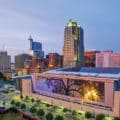
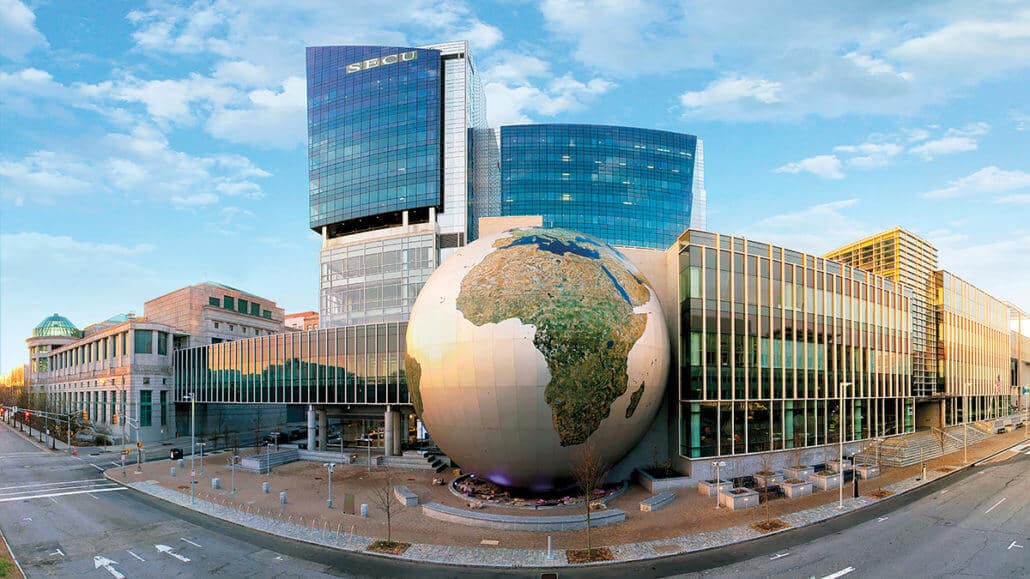

Comments
Pingback: Raleigh’s Iconic Architecture: Past, Present and Future | College of Design School of Architecture
Pingback: How Raleigh Got Its Modernist Roots – Hillman Real Estate Group